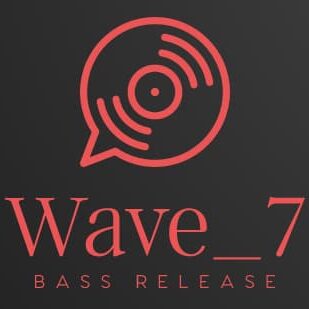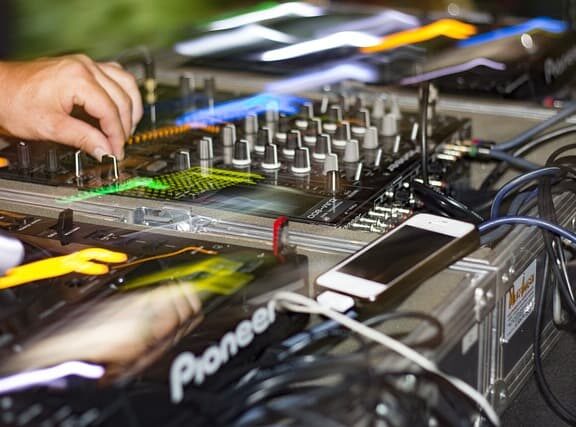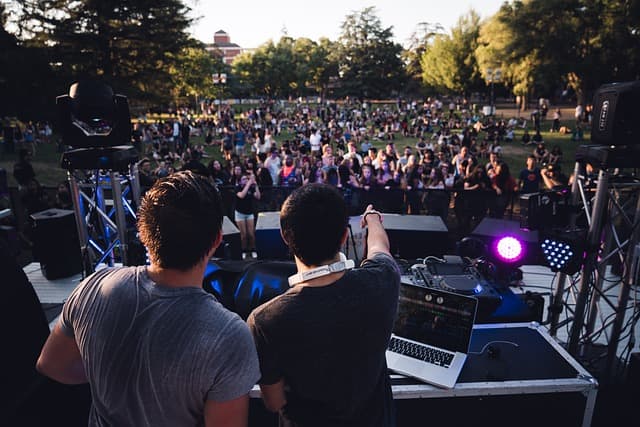In 2016, 75% of the music published in the world was created with the help of computer programs, drum machines, samplers and synthesizers. Electronic music is only conventionally divided into genres, because each of these directions has many facets and forms: from experimental lounge to dance styles.
But electronic music owes its appearance not a DJ and musicians, and the employees of various scientific laboratories, experimenting with sound waves.
The world of electronic music is in constant movement and its changes are directly connected with technical progress …..
The history of electronic music can be seen as a parallel of development of corresponding electronic musical instruments, devices and gadgets. On this basis, it can be argued that the electronic music in 2010 is 140 years old!
Progenitor of today’s electric rhythms can be considered the German physicist Hermann Ludwig Ferdinand von Helmholtz (1821-1894). In 1860 he published “SENSATIONS OF TONE” – practical conclusions and analysis of his own findings in the field of electromagnetic vibrations. The electrically controlled device he designed was called the Helmholtz Resonator.
List of landmark inventions that influenced the development of electronic music:
- 1870 – first electronic instruments using various sound generation techniques “Telharmonium and Chorelcello” (William Duddell and Elisha Grey, USA).
- 1876 – electromagnetic instrument with two octaves of grand piano keyboard and built-in loudspeaker “Musical Telegraph” by American scientist Elisha Gray.
- 1897 – The first full polyphonic electronic multi-octave instrument “Dynamophone/Telharmonium”, a huge design using 145 modified dynamos. A simplified version of these designs was later used in the famous Hammond organ. (Thaddeus Cahill, USA).
- 1888/1908 – electronic/electroacoustic instrument “Choralcello Electric Organ”, a virtually modified version of the “Telharmonium” project (Melvin Severy and his brother George B. Sinclair. USA).
- 1899 – incredible experiments with street gas lanterns, which served to create the “Singing Arc”, a device controlling voltage changes in the amplitude and frequency characteristics of sound (William Du Bois Duddell, France).
- 1913/1922/1931 – “Intonorumori, Rumorarmonio and Enharmonic Piano. Creations of the Italian futurist artist and musician Luigi Russolo (together with Marinetti and Piatti), whose technical and musical creations continue to influence many composers today. Among the outright “plagiarizers” of his work are Pierre Schaefer, John Cage and Edgar Varese.
- 1915 – The first electromusical instrument on vacuum tubes, the Audion Piano, working on the principle of frequency modulation (Lee De Forest, France).
- 1916 – the first electron-optical instrument “Optophonic Piano”, using the technique of painted glass disks, mirrors, lenses and filters (artist – futurist, musician Dmitry Baranov-Roshchin, Ukraine/France)
- 1921/1930 – Electrophon, Spheraphon, Partiturophon and Kaleidophon (German microtonal musician Joerg Mager).
- 1926 – the “Pianorad” (a modified “Staccatone”), a polyphonic polyphonic electric musical instrument still in use today (Clyde Finch, Radio News Lab, USA).
- 1931/1936 – “Radio Organ of a Trillion Tones”, used the technique of rotating photoelectric disks and rays of light. Later this principle was called “Polytone” (A.Lesti and F. Sammis, USA).
- 1935 – the legendary “Hammond” organ. Reduced and modified “Telharmonium” design (Laurens Hammond, USA).
- 1939/1940 – the first “Speech Synthesisers”, “The Vocoder” and “Voder” (physicist Homer Dudley, Bell Laboratories USA). Then there was Luciano Berio’s Studio for Electronic Music in Milan and the mighty Synclavier and Fairlight and so on.
The situation changed a bit after the emergence of several projects of fully electronic bands, which brought electronics closer to the mass listener.
A kind of elitism and a label “not for everyone” was almost always with this music and its numerous manifestations.
The ’70s were a springboard for psychedelic sentiments in musical culture in general. Illusory, futuristic worlds were preached by rock bands and electronic artists alike. Electronics began to be embodied in more accessible rhythms and harmonies: electro-pop projects appeared (Kraftwerk, Telex, Alphaville, Rockets, etc.).
In the mid-’70s, the music scene was shifting sharply in the direction of light, beautiful “disco,” which affected many serious genres as well.
Hundreds, thousands, maybe millions of homegrown computer composers saturated the World Wide Web with their often lowbrow, homemade creations, ranging from classical to urban electronica. Primitive and super-powerful musical computer programs allow anyone with little or no relevant skills today to feel like a creator.
Electronic music can be discovered at club concerts, not from home loudspeakers.





